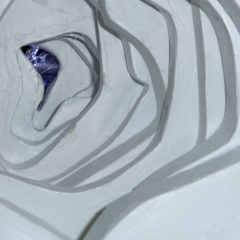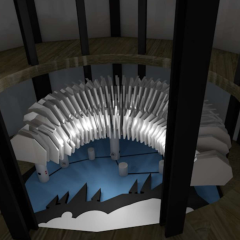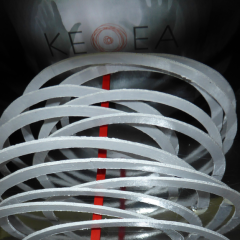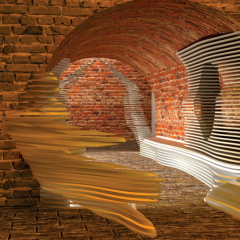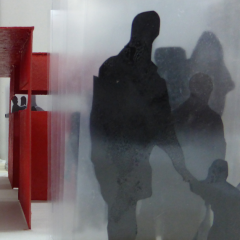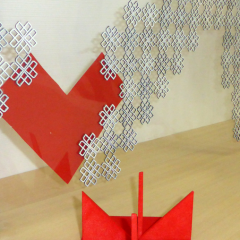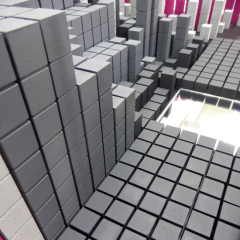Course Tutors
General
This course introduces undergraduate students to the design of small-scale ephemeral constructions such as installations for temporary events. Through processes and methods of research, design, and iterative development through modeling, students will learn functional knowledge addressing an installations’ basic features, project planning, as well as considering concepts of scale, structure, assembly, disassembly and space making for interior site-specific projects. Project topics range from programs and actions related to the current social, humanitarian, environmental issues etc.
Course content
The course includes the study and implementation of an integrated design program within a special event which takes place in a public space. The installation highlights the activity of a cultural, environmental or humanitarian action. The installation has both an aesthetic and a communication function. Also, it will have a specific use [shell, canopy, roof, bridge etc.]. Students will work collaboratively in a team. Each team will be asked to select a site and a program around which to design a flexible temporary structure, with consideration given to the communication, materiality, fabrication method, and life cycle. In addition to producing structural solutions to ephemeral problems, the course will study the effect of the resultant temporary structures on user experience, including a wide range of emotions and sensations of a user while using them. Moreover, it will cover the notion of lightness in terms of visual and physical weight, as well as, the reduction of the ecological footprint will become a core advantage of these structures.
Programme aims
The programme aims to: _encourage students to consider elements that can be used to bring about the user experience such as: community groups, new ideas, interaction, aesthetics and originality _encourage students to consider usability as a necessary component but obviously not the only one that matters _build the students awareness of the most interesting and attractive services to target a user _encourage students to evaluate the targeted user requirements, the context / environment and the conditions, using conventional research methods and methodologies _encourage students to experiment with dynamic structures and fabrication techniques (e.g. tessellating, folding, sectioning) as well as, design strategies in order to support the synthetic process of the design procedure _expand students’ ideas in a design proposal, through sketches, drawings, prototypes, concept models, mockups and storyboards _ encourage students to use a wide variety of tools and procedures to implement, visualize and present their deliverables
Learning Outcomes: Knowledge and Understanding
By the end of the course, the student will be able to: _ have critical thinking and problem-solving skills _communicate information, ideas and messages to a target audience, utilizing the user experience _be conscious of the design principles that contribute to the creation of a good user experience _have knowledge and understanding of basic issues related to the ephemeral constructions _gain an extra understanding of the concepts of scale, structure, assembly / disassembly for specialized interior projects _ be conscious and utilize the understanding of the existing approaches they have collected through the research, as sources of inspiration and transferable ideas for the creation and refinement of the concepts _ use the appropriate design skills: sketches, drawings and models so that they reflect the quality and suitability of their experiments and to inform their progress. _work using both digital and traditional mediums to improve the control of techniques and technologies required in the context of the study _confidently participate within a team
Bibliography
• Addington, M. & Schodek, D. (2005). Smart Materials and New Technologies: For architecture and design professions. Oxford: Architectural Press, Elsevier
• Andersen, P. & Salomon, D. (2010). The Architecture of Patterns. New York: W.W. Norton & Company
• Buley, L. (2013). The User Experience Team of One: A Research and Design Survival Guide. Brooklyn, New York: Rosenfeld Media
• Ferrara, M. & Bengisu, M. (2014). Materials that Change Color: Smart Materials, Intelligent Design. Cham, Heidelberg, New York, Dordrecht, London: Springer
• Garcia, M. (2009). The patterns of architecture: architectural design. London: John Wiley & Sons
• Garrett, J. J. (2010). The Elements of User Experience: User-Centered Design for the Web and Beyond. United States: Pearson Education
• Iwamoto, L. (2009). Digital Fabrications: Architectural and Material Techniques. New York: Princeton Architectural Press
• Moussavi, F. (2009). The Function of Form. Barcelona & New York: Actar & the Harvard University Graduate School of Design
• Norman, D. A. (2005). Emotional Design: Why We Love (or Hate) Everyday Things. New York: Basic Books
• Pallasmaa, J. (2012). The Eyes of the Skin: Architecture and the Senses. Chichester: John Wiley & Sons
• Ritter, A. (2007). Smart Materials in Architecture, Interior Architecture and Design. Basel, Berlin, Boston: Birkhäuser – Publishers for Architecture
• Weinschenk, S. (2011). 100 Things Every Designer Needs to Know About People. Berkeley, CA: New Riders


